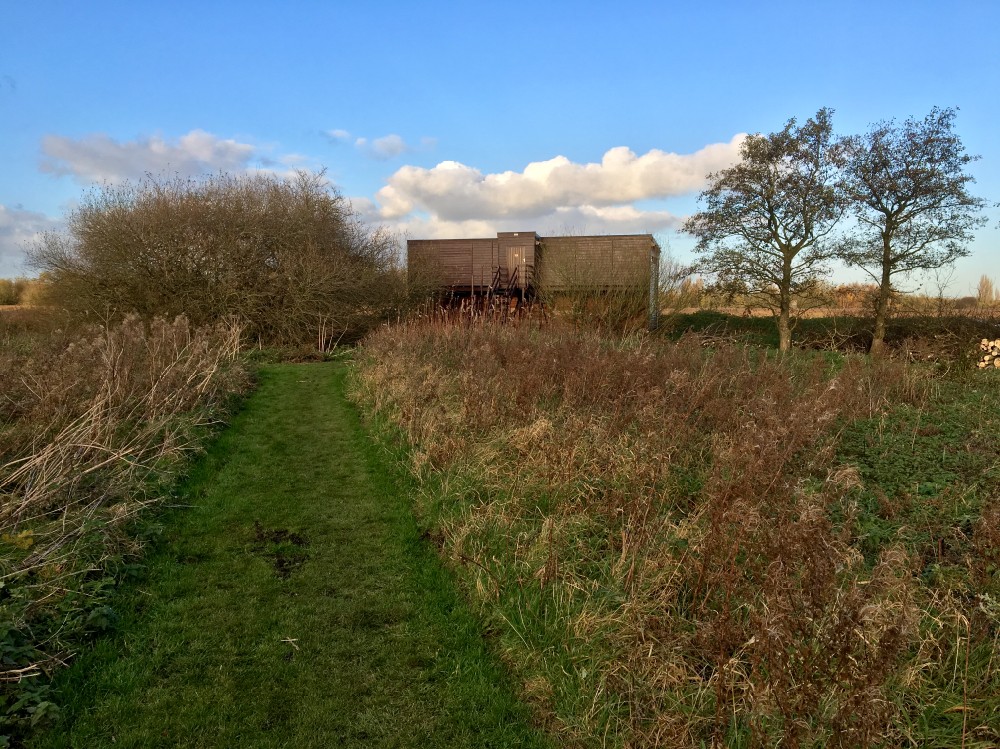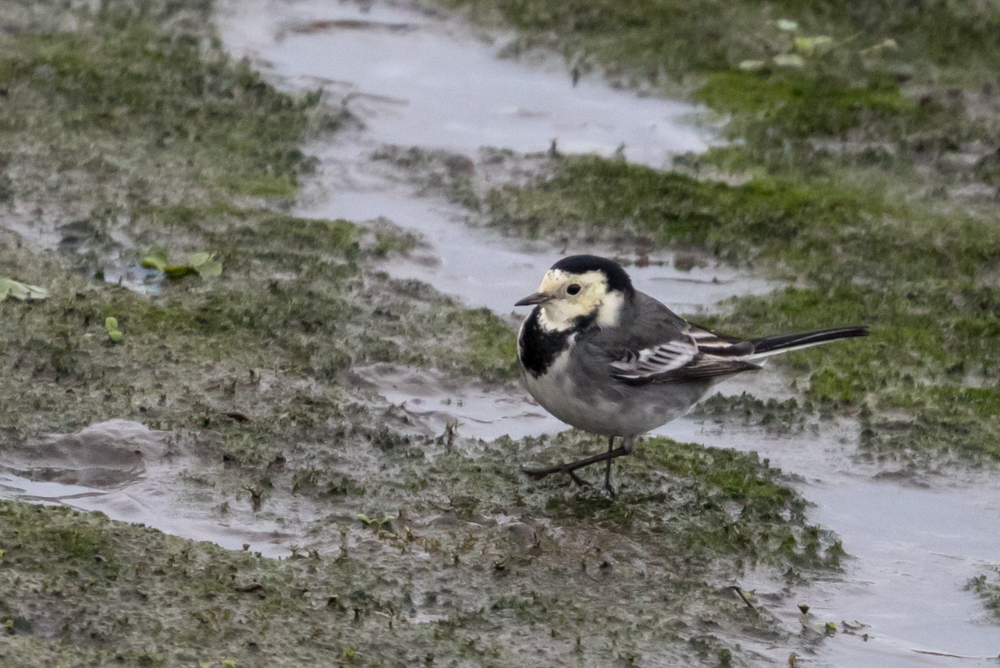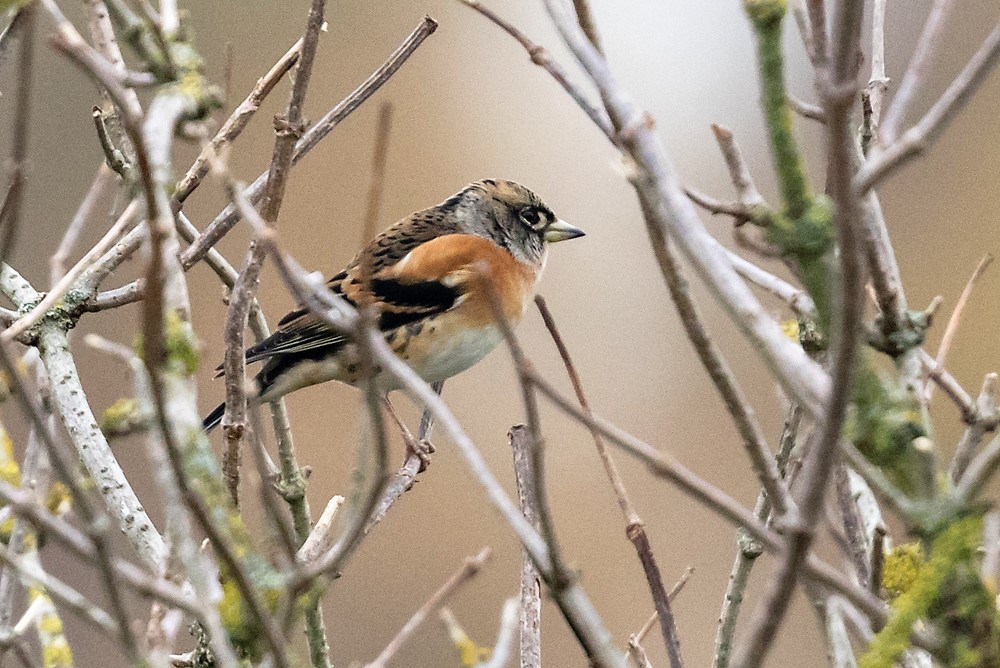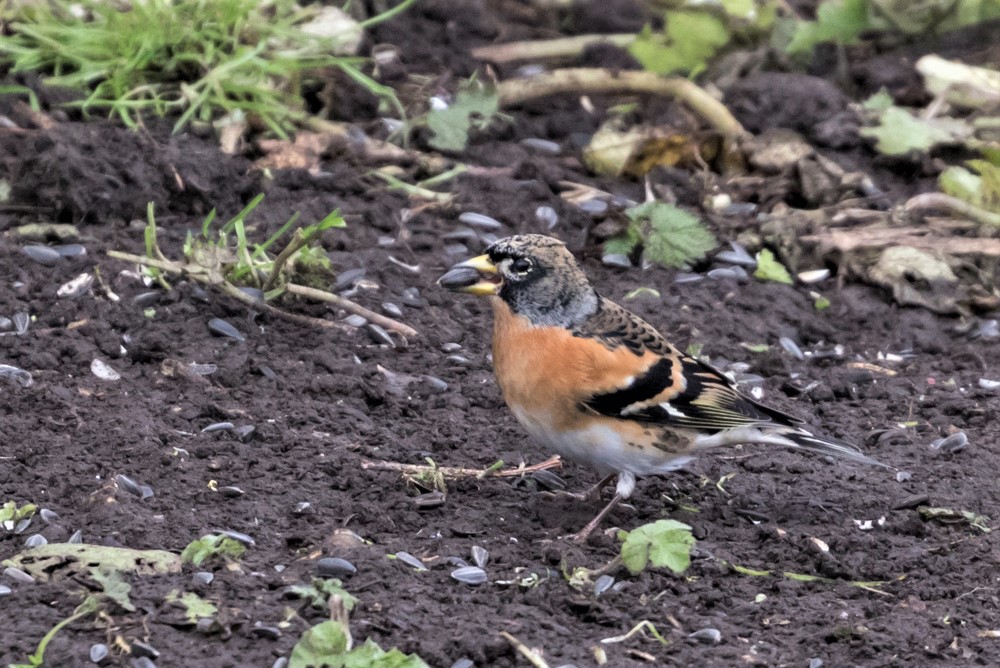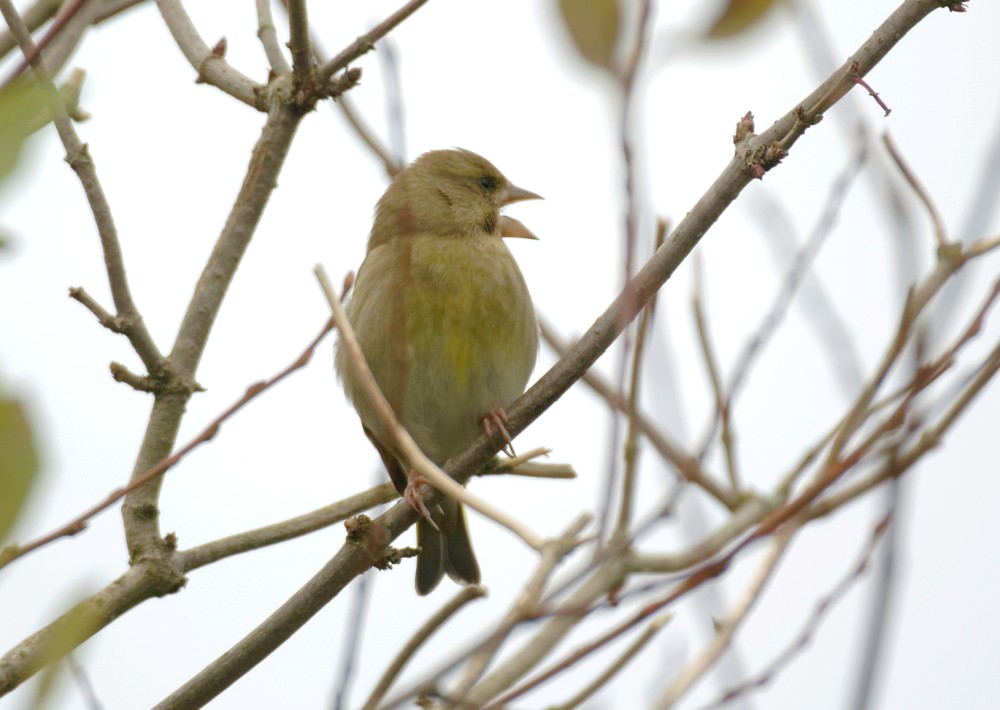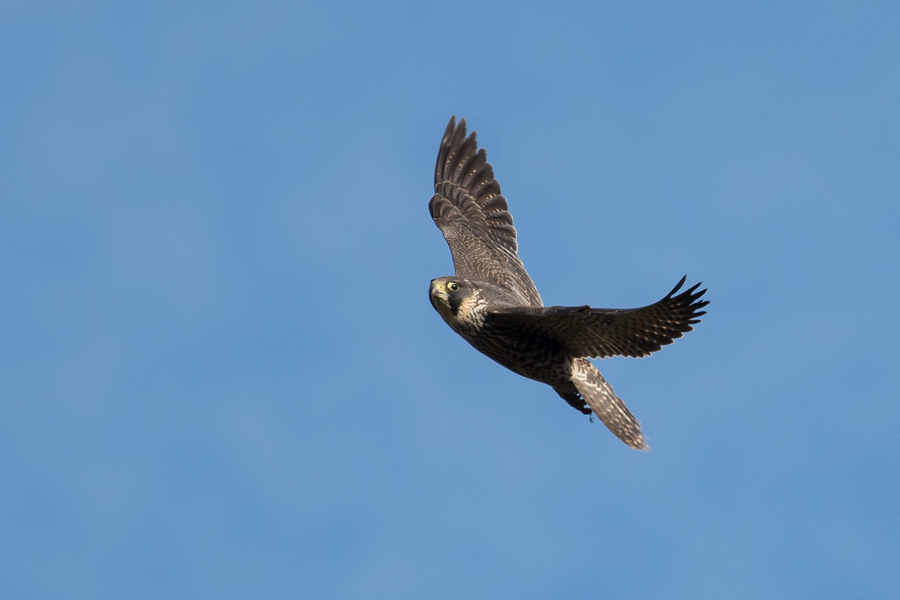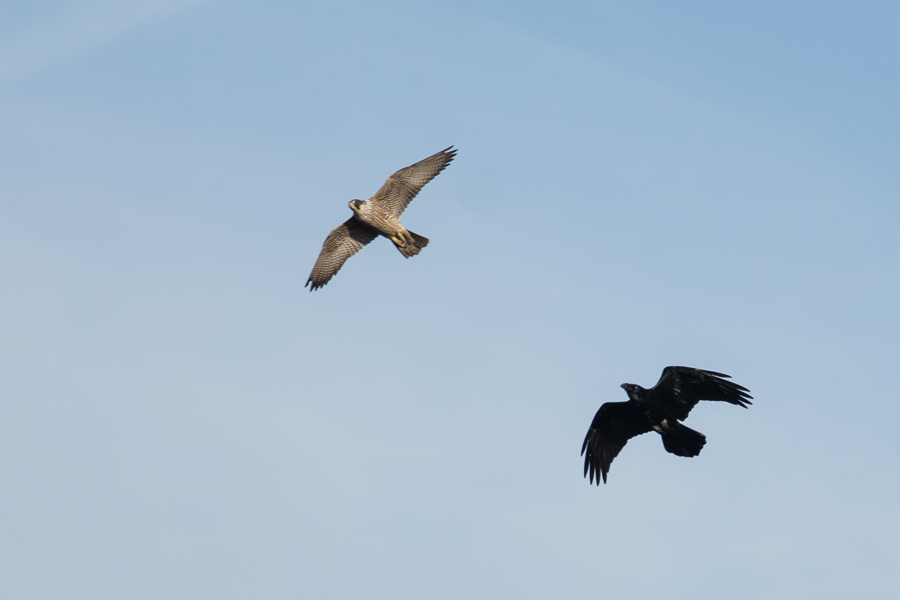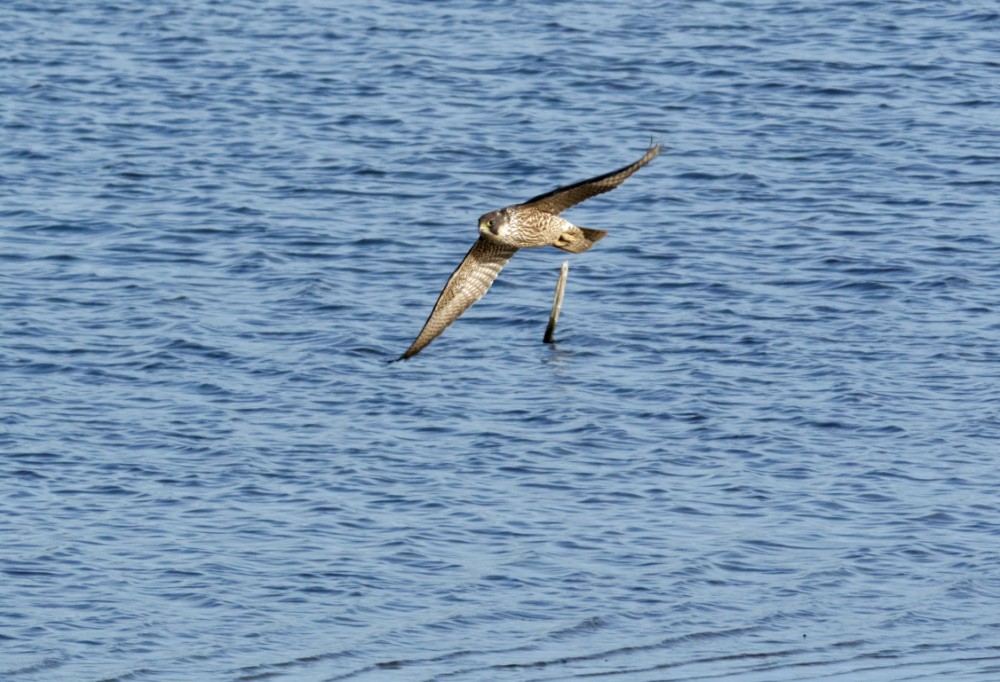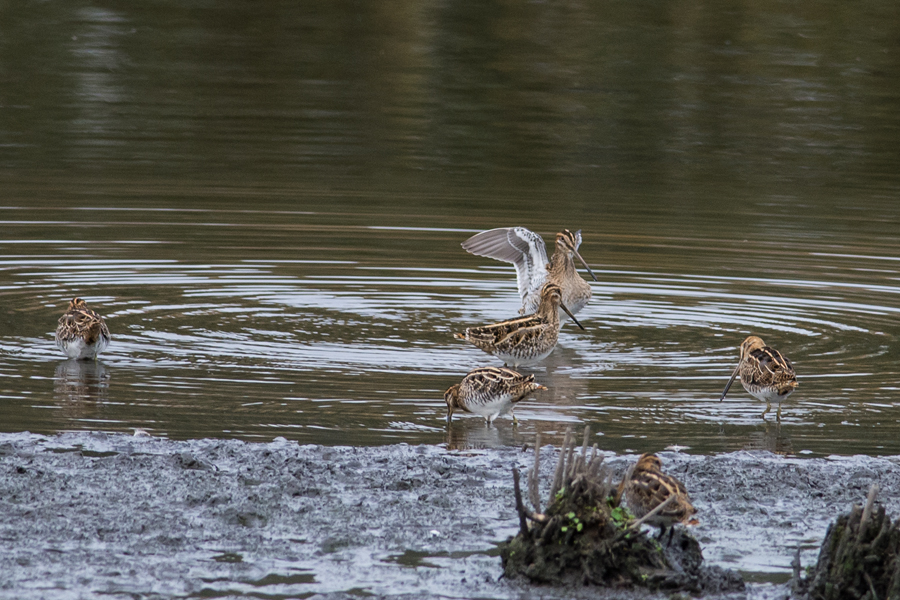Woolston Eyes Monthly Sightings
2017-11-24
No.3 bed was very quiet though many Teal were calling in the reed beds. In the cold but sunny conditions a major surprise was a Red Admiral inside the east bank where it felt warmer in the sun. Several Water Rails were calling in the reeds in the same area and up to 4 Bramblings under the Morgan Hide feeders. Water levels have risen in the past few days but still have some way to go to reach the hoped for winter level.
Submitted by: Brian Martin
2017-11-24
Late entry for 18th November with Wildfowl(WeBS) count for all the Reserve.Although waterfowl numbers generally have been low some species were present in good numbers,the exception being Gadwall for which there was the lowest count for many years. Little Grebe 10, Great crested Grebe 8, Cormorant 15, Mute Swan 16, Grey Heron 3, Shelduck 18, Greylag Goose 1, Canada Goose 7, Wigeon 2, Gadwall 8, Teal 406, Mallard 106, Shoveler 52, Pochard 1, Tufted Duck 296, Goldeneye 9, Goosander 4, Water Rail 2, Moorhen 57, Coot 8, Snipe 1, Woodcock 1, Black tailed Godwit 7, Black headed Gull 20, Common Gull 1, Herring Gull 1, Buzzard 2, Sparrowhawk 1
Submitted by: Brian Martin
2017-11-18
A productive ten hours today. We started at dawn in the Morgan Hide and then walked down to Bollin Point to complete the monthly Wildfowl Count before returning to No.3 bed, staying till dusk to count the Pied Wagtail roost. Highlights included: 4 Goosanders, 5 Goldeneyes, 11 Bramblings, 440 Fieldfares, 675 Redwings (including 350 going to roost on No.4 bed), 245 Pied Wagtails in the No.3 bed roost, 4 Cetti’s Warblers, 2 Chiffchaffs, 120 Greenfinches, 5 Little Grebes, 3 Water Rails, 4 Black-tailed Godwits, 1 Snipe, 44 Shovelers, 350 Teal, 240 Pink-footed Geese in four skeins, 43 Moorhens, 1 Woodcock, 1 Peregrine, 7 Buzzards, 1 Kestrel and 10 Sparrowhawks (including six soaring at the same time over Butchersfield Tip).
Photo of a drake Shoveler from this morning.
Cheers David Bowman (with Alan Warford, Helen Wynn, Kelly Ainsworth, George Dunbar and Brian Baird)
Submitted by: David Bowman
2017-11-16
An atmospheric, mid-afternoon till dusk visit to No.3 bed today. I was hoping that some autumn/winter roosts would be starting to form and wasn’t disappointed. On arrival at the Morgan Hide, with the bed to myself, there were plenty of waterbirds present, with counts of: 158 Teal, 9 Shelducks, 24 Shovelers, 33 Moorhens, 2 Water Rails, 1 Kingfisher, 16 Mallards, 10 Gadwall and 3 Grey Herons. A Sparrowhawk then dashed through and took one of the 85 Greenfinches which were around the feeding station, sending the remainder, plus five Bramblings, dashing for cover. As the light started to fade, two Ravens cruised through and 70 Tufted Ducks dropped in. Finally, a few Pied Wagtails started to arrive from the south, slowly building till the roost held around 160 birds. As I was leaving, a stocky and very unconcerned Badger waddled along the track ahead of me. Cheers David Bowman
Submitted by: David Bowman
2017-11-15
There were 2 x Pied and 1 Grey Wagtail on the scrape this morning. Photo of the Pied Wagtail
Submitted by: Hazel Rothwell
2017-11-15
A productive morning on No.3 bed, with Ashley Radford and David Spencer, sorting out our coppicing programme for the coming winter. As ever, there were plenty of birds around, with highlights of: 8 Bramblings, 2 Siskins, 2 Lesser Redpolls, 1 Cetti’s Warbler, 5 Goldcrests, 33 Redwings, a late morning westward movement of 180 Fieldfares, 1 Kingfisher and 2 Water Rails.
Photo of a Greenfinch
Cheers David Bowman
Submitted by: David Bowman
2017-11-11
This morning started with a misty, autumnal feel before clearing to blue skies and a pleasant temperature. We started with breakfast in the Morgan Hide on No.3 bed, where four Water Rails, 2 Cetti’s Warblers, 4 Black-tailed Godwits, scores of Redwings and the odd Brambling, Siskin and Lesser Redpoll were noted among the regular species. Then it was a hike down to No.1 bed, where two Peregrines were on the Viaduct and another Cetti’s Warbler was in song. Then on to Bollin Point, where it was clear that there had been a significant arrival of thrushes. David Spencer and I continued on to Rixton Paddocks and the arable land beyond and were treated to the sight of c.300 Fieldfares and 280 Redwings feeding actively in the Hawthorns around the Paddocks, along with small numbers of over-flying Meadow Pipits and Skylarks. Then the long walk back to No.3 bed, where eight Bramblings were feeding under the Morgan Hide feeders. Photo of a Water Rail from this morning
Cheers David Bowman (with David Spencer, Alan Warford, Helen Wynn, Diane Shepherd, Dave Steel, Les Jones and Brian Baird)
Submitted by: David Bowman
2017-11-09
A pleasant, sunny afternoon on No.3 bed started well, with 2 Ravens dropping in, quickly followed by an immature female Peregrine. The latter twice skimmed across the lagoon and tried to catch one of the 460 or so Teal on the bed. Out on the water, with the Teal, were three Wigeons, 40 Shovelers and 3 Shelducks, plus a single Black-tailed Godwit. Finch numbers were still good, with 2 Bramblings, 100 Linnets, 45 Chaffinches and 120 Greenfinches, most of which were around the seed crop on the North Meadow. A walk around the bed also produced 15 Redwings and two Woodcocks, in addition to one of the latter seen earlier by Ashley Radford.
Photo is of the Peregrine from today.
Cheers David Bowman (with Brian Martin)
Submitted by: David Bowman
2017-11-04
With a “Visible Migration” session planned for this morning it was disappointing to arrive, at 6.15 am, to a light drizzle. After briefly sheltering in the Morgan Hide, the weather started to clear and we were able to make our way to the top of Butchersfield Tip and get cracking. With a cool north-westerly blowing, the clouds slowly cleared to produce excellent viewing conditions. Highlights were: 1,600 Pink-footed Geese, 8,000 Starlings, 650 Lapwings, 245 Redwings, 8 Fieldfares, 3 Ravens, 3 Peregrines, 1 Lesser Redpoll, 14 Siskins, 45 Stock Doves, 10 Common Buzzards, 2 Sparrowhawks and 2 Kestrels. Afterwards, I managed a pleasant hour in No.3 bed, with birds of note being: another Peregrine, 15 more Redwings, 1 Brambling, 2 Cetti’s Warblers, 30 Black-tailed Godwits, 1 Kingfisher, 1 Water Rail and 85 Linnets.
View of the “Migration Watch” team in action.
Cheers David Bowman (with Dave Steel, David Spencer, Sue Haddock and Brian Baird)
Submitted by: David Bowman
2017-11-02
I only had 2 hours on number 3 bed today, inspite of the chainsaws buzzingit was still nice to be there though birds were at a distance, 6 Black tailed godwits 2 buzzards lots of teal about a dozen shovelers 6 Snipe in front of Frank Lindley hide, a few small groups of redwing and 1 Red admiral, walking along the path to the Weir i noted a dead Juvenile Mute Swan on the river
Submitted by: Keith Gallie
2017-11-02
An early start on No.3 bed today, with clear skies to the north, held the promise of some decent “visible migration”. Soon after sunrise, 27 Pied Wagtails left their roost in the reeds. Shortly afterwards, large numbers Pink-footed Geese started to pass over, leaving the Lancashire Mosses and heading towards the east coast. At one point, skeins stretched right across our eastern horizon and by the end of the morning 15 skeins, totalling more than 5,000, had been noted. Thrushes were also moving, but in smaller numbers, with 240 Redwings and 25 Fieldfares. Of the regulars, 40 Black-tailed Godwits, 1 Kingfisher, 1 Water Rail, 2 Willow Tits and 5 Snipe were present, among many of the commoner species. Finches were particularly notable around the seed crop on the North Meadow, with:2 Bramblings, 1 Lesser Redpoll, 1 Siskin, 6 Bullfinches, 60 Linnets, 25 Goldfinches, 70 Chaffinches and 100 Greenfinches.
Cheers David Bowman (with Alan Warford and David Spencer)
Submitted by: David Bowman


